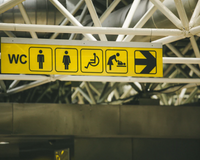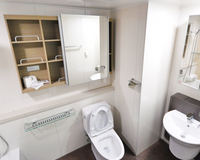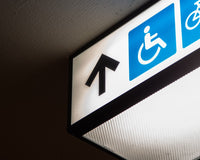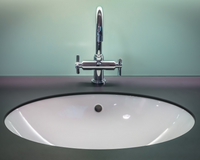Adding accessible and safe baby changing stations to public restrooms is a critical consideration for property managers and commercial contractors. Parents and caregivers expect these stations to provide a safe space for changing diapers, ensuring their convenience and peace of mind.
Whether you’re retrofitting an existing space or designing a new facility, following proper installation practices is essential. This blog will explore key tips for installing baby changing stations, covering everything from ADA compliance to equipment maintenance.
Understanding Compliance and Regulations
When installing baby changing stations, understanding and adhering to compliance standards must be a top priority. The Americans with Disabilities Act (ADA) and local building codes in many areas have established strict guidelines to ensure safety, accessibility, and usability for all.
One detail to consider is the height of the changing table. When in the open position, the changing station should be between twenty-eight and thirty-four inches from the floor. This range ensures that it is within reach of all caregivers and guarantees accessibility for individuals of varying heights, including those in wheelchairs.
When a wall-mounted diaper changing station is in the closed position, it must not protrude more than four inches from the wall. This requirement helps maintain safe pathways and minimizes the risk of accidents in tight or high-traffic areas.
According to ADA requirements, diaper changing stations cannot require a high forward reach of more than forty-eight inches or a low forward reach below fifteen inches from the floor. These specifications are critical for individuals with mobility constraints, allowing them to use the station without straining or overextending their bodies.
Before installation, thoroughly review ADA regulations and your local building codes since they may have additional requirements unique to your location. Compliance not only enhances user safety but also ensures your facility avoids legal issues that could arise from not adhering to regulations.

Choosing the Right Location
The location of a baby changing station plays a significant role in its usability. The placement can be the difference between a convenient restroom facility and one that frustrates users.
Stations should be installed in public restrooms, and businesses should strive to provide them in both men’s and women’s restrooms to meet the needs of all caregivers. All-gender or family restrooms are another excellent option that offers additional square footage and privacy.
Visibility is another important factor. Diaper changing stations should be easy to locate, with clear signage directing users to their location. Avoid placing them in obstructed or hidden corners so parents and caregivers can find them quickly.
Consider selecting a location that supports privacy while still being easily accessible. A quieter area within the restroom, away from high-traffic zones, often creates a more comfortable experience for caregivers.
Selecting the Appropriate Diaper Changing Station
There’s a wide variety of baby changing stations available, and choosing the right model involves considerations such as size, installation type, and material.
Horizontal stations are the most common option, offering ample space for changing and accommodating a range of public restroom floor plans. Vertical stations, on the other hand, are ideal for facilities with space constraints, as they take up less wall space.
Wall-mounted stations are the standard choice for most commercial restrooms due to their convenience and space-saving design. When selecting a commercial diaper changing station, look for models made from durable materials such as high-density polyethylene or stainless steel. These materials are long-lasting and resistant to wear, making them a practical choice for high-traffic areas.
Think about the station's weight capacity as well. Many modern changing stations are designed to support up to or beyond two hundred pounds, providing extra assurance for safety and durability.
Step-By-Step Installation Guide
Installing a baby changing station is not complicated, but it requires careful attention to detail to ensure safety and compliance. Here’s how to do it right:
- Start by inspecting the restroom wall where the station will be mounted. Use a stud finder to locate the wall studs, as it’s a requirement to attach at least one end to a stud for stability. If the other side of the station can’t be attached to a stud, you’ll need to use high-strength toggles, also referred to as butterfly anchors, to secure it.
- Once you’ve located the stud, mark the desired mounting height. The ADA guidelines require a height that’s between twenty-eight and thirty-four inches.
- Use a level to check the mounting marks. This is the best way to ensure the changing station is level.
- Drill pilot holes at the marked locations, and mount the station using the provided hardware.
- Double-check that all screws and anchors are tightly fastened. Finally, test the station by opening and closing it, ensuring smooth operation.
Following these steps guarantees a secure and compliant installation, reducing risks for users.

Prioritizing Safety Considerations
While proper installation is crucial, additional safety features should not be overlooked. Many stations come equipped with safety straps to keep the child secure during use. Ensure that these straps are in proper working condition and can be adjusted securely.
Clear and visible labeling on the station, detailing weight limits and usage instructions, is equally important. Most units also have a specified weight limit, commonly around two hundred pounds. Ensuring this information is visible to users helps maintain safety and prevents misuse.
Routine inspections should also be part of your maintenance plan to check for any signs of wear or damage that could compromise safety.
Tips for Maintenance and Cleaning
Once installed, maintain the baby changing station to ensure it remains safe, functional, and hygienic for users. Regular cleaning is nonnegotiable in a public restroom environment, particularly around baby changing stations.
Check the manufacturer’s cleaning guidelines to protect the integrity of the station’s materials. Harsh, abrasive cleaners are generally not recommended, as they can damage the surface or remove antimicrobial coatings. Instead, opt for commercial disinfectants that effectively sanitize without harming the material.
Routinely look for signs of wear and tear, such as loose screws, damaged safety straps, or cracked surfaces. Addressing these issues promptly reduces the risk of accidents and boosts user trust in your facility.
When installing baby changing stations, it’s important to follow the manufacturer’s manual. This guarantees that you’re creating a safe, accessible, and vital amenity for caregivers and children. The next time you plan an installation, revisit these key tips for installing baby changing stations to ensure your facility meets regulatory standards.





